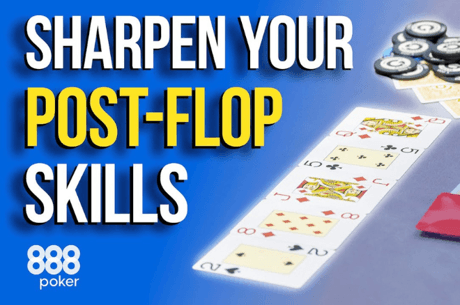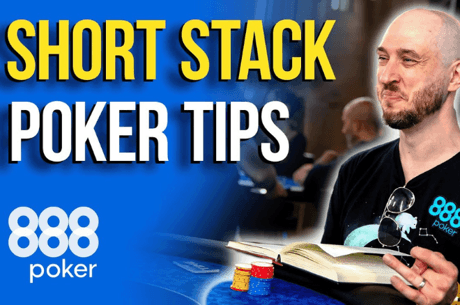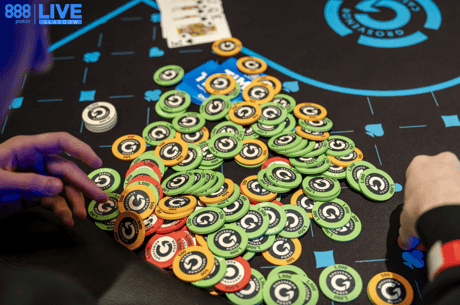His and Hers Poker: Follow the Road Map

Hello, Poker Friends! This week we take a look at one of the most important considerations in a three-bet pot — stack sizes.
The Table and Villain(s)
Hero is at a $2/$5 table at the Borgata. The Borgata Fall Open tournament is going on, so the table is populated by many players knocked out of the day's event. The main Villain for this hand likely falls into that category, as Hero (Matt) doesn't recognize him as a Borgata reg. Thus far, Villain's play has been loose and passive. Villain has not yet three-bet in about two hours at the table. The Villain is on the button for this hand.
The player in the cutoff seat is a tricky, highly aggressive pro who has played with Hero on several occasions.
Effective Stacks: ~$600 (Villain); ~$1,000 (cutoff); Hero covers both.
Preflop
Action
Hero opens to $20 from under the gun with A♠A♦. It folds around to the player in the cutoff who calls. The Main Villain then three-bets to $80 from the button. The blinds fold. Hero calls. The player in the cutoff folds, and we go heads-up to the flop.
Analysis
Many players will always four-bet pocket aces without much thought. However, there should be nothing automatic in poker. Each spot is unique and requires careful examination. The first thing you should do when you get three-bet is to put your head up. I'm not sure if this is where the term "heads-up" came from, but it seems a good explanation. What should you be looking at? First and foremost: the three-bettor's stack size. A three-bet is a declaration that stacks may likely go into the pot during the course of play. Thus, the effective stack size serves as a sort of "road map" for the hand, with the end destination being an all-in bet.
What does the "road map" tell us in this hand? Villain's $80 three-bet is quite large in relation to his $600 starting stack. Even if just one player calls, there will be $187 in the flop pot and Villain will have $520 remaining. That equates to about two meaningful postflop bets.
Determining the number of postflop bets is the most important component of the "road map." It gives us different information when we have different hand types. When we have a non-nutted hand, it lets us know how quickly we are going to need to make a decision about whether to pot commit ourselves. By contrast, when we have a nutted hand, it lets us know how aggressive or passive we need to be in order to ensure that we can win our opponent's entire stack. In other words, it's like a "speed limit" on our road map.
With A♠A♦, we have a nutted hand preflop. Therefore, we should already be coming up with a plan to get our opponent's stack. If both of us are deep stacked, we would have a compelling reason to raise — namely, to ensure that stacks could get in by the river.
Here, there is no such need to step on the gas. We can just call and rest assured that we will have plenty of time to get the rest of Villain's money in the middle. In addition, flatting could have the effect of inducing the aggressive pro in the cutoff to attempt an ill-timed squeezing four-bet.
Flop
Action
With $187 in the pot, the flop is K♣7♠2♣. Hero checks. Villain bets $125. Hero calls.
Analysis
On the weekend in question, Hero probably saw a dozen tournament players check-raise with pocket aces in spots just like this. If you asked them why, they would say something like, "I just wanted to take it down now." This flawed reasoning has its origins in fear and impatience. A closer look reveals why both are unnecessary in this spot.
First, there is absolutely nothing to fear. A loose-passive player has nearly zero draw combos on this board after three-betting preflop. Even if Villain three-bets with A-K-suited, A-Q-suited and K-Q-suited, the only flush draw possibly remaining for him on this flop is A♣Q♣. So there is absolutely no reason to raise for protection.
Second, there is no reason to be impatient. Our "road map" told us that there would be two meaningful postflop bets. Villain just made one of them. Do we need to make the second one a flop raise by Hero? Absolutely not. There is more than enough time to get the rest of Villain's stack.
If both players had $1,500 left, that would be a different story. With a mere $395 left in front of Villain, all that raising here would do is give Villain a chance to escape by folding before he pot commits himself with another bet. This is why it is so critical to keep your head up and know how the effective stack size will affect the hand.
Turn
Action
The pot is $437 and the turn brings the 2♦ for a board of K♣7♠2♣2♦. Hero checks and Villain checks behind.
Analysis
As discussed in the flop analysis, weaker players are often motivated by fear and impatience. When Villain checks this turn, we should intuit that his range is highly capped. If he had a very good hand, he would certainly bet it. He would fear giving a free card to the flush draw and would be impatient to get value. Thus, Villain's most likely holding becomes a pocket pair under the king.
River
Action
Still with $437 in the pot, the river is the 9♠, making the final board K♣7♠2♣2♦9♠. Hero shoves for Villain's effective stack of $395. Villain snap-calls and rolls over K♠10♠. Hero tables his A♠Q♦ for the winner.
Analysis
Two factors speak in favor of a shove in this spot, rather than a small bet. First, the flush draw bricked out. That gives us a chance to make a highly polarizing shove which should look to our opponent like either a full house or a stone bluff. Since the only boat we are likely to have here is with 7-7, that should make a shove look very bluff-heavy.
Second, our opponent is a tournament player. Such players will often take the line of making a pot-controlling check on the turn and a bluff catch on the river with one pair. We should expect to get a call from this Villain at a higher frequency than an average cash game reg. The fact that Villain shows us K♠10♠ means that we obviously need to reassess his three-betting frequency if he decides to rebuy and continue at our table.
The Takeaway
Go back and see how Hero won Villain's whole stack by sticking to the "speed limit." A raise at any point by Hero would certainly have caused Villain to fold his K♠10♠.
Always have a reason for raising. When you have a nutted hand, that reason should be getting your opponent's entire stack in the pot by the river. Don't succumb to fear or impatience. If the road map of the effective stack size tells you to set a certain speed limit, stick to the plan.
His and Hers Poker is a free, weekly strategy podcast hosted by Matt and Tracey Waldt. They are a married couple who play live cash games on the East Coast. Their podcast focuses on providing practical advice about hand reading, with an emphasis on how to identify and exploit the common leaks and imbalances of low-stakes players. His and Hers Poker can be found on iTunes, Google Play and other podcast services. For more information, and to subscribe, please visit hisandherspoker.com.
Photo: "A pair of aces...," E20Ci, CC BY 3.0.










